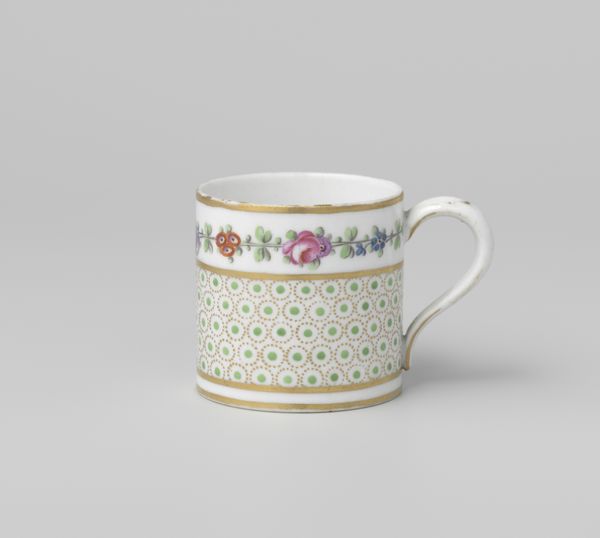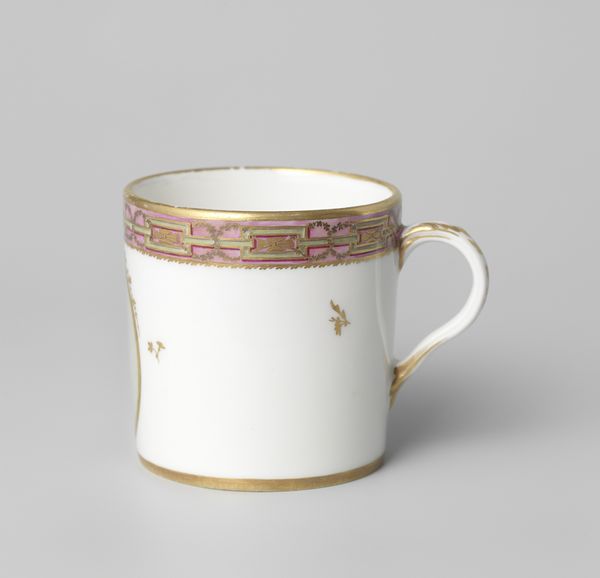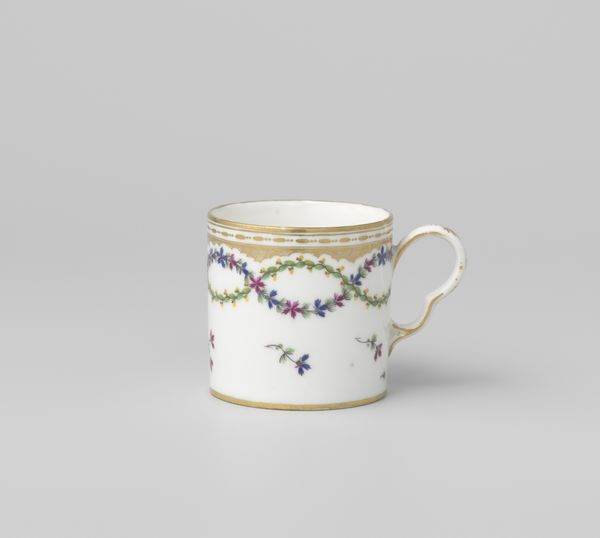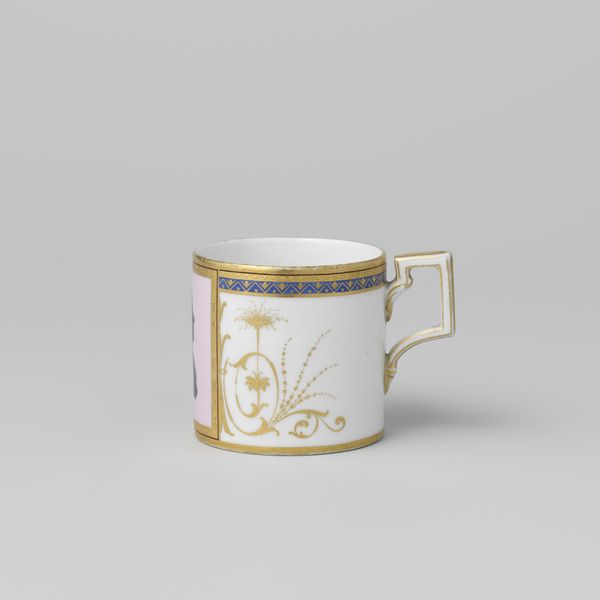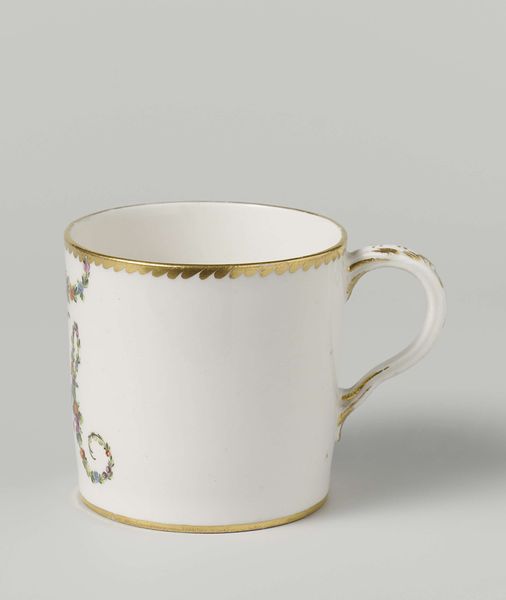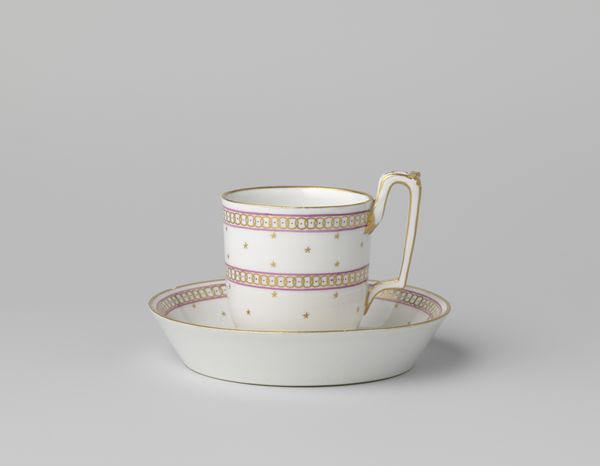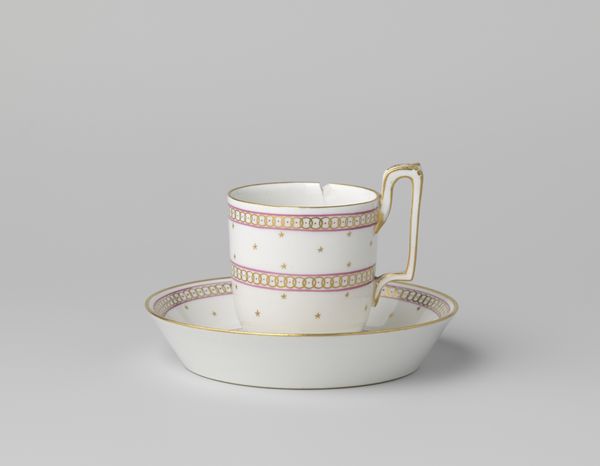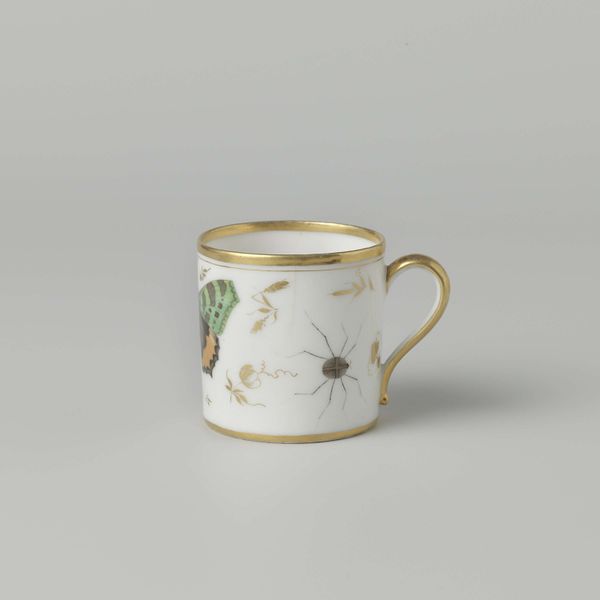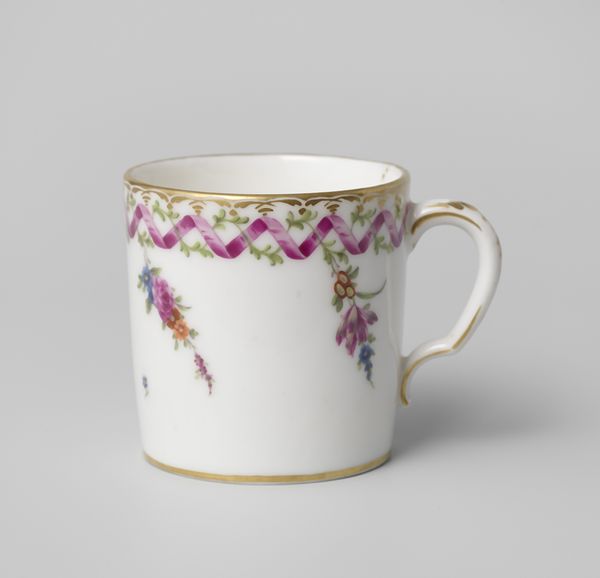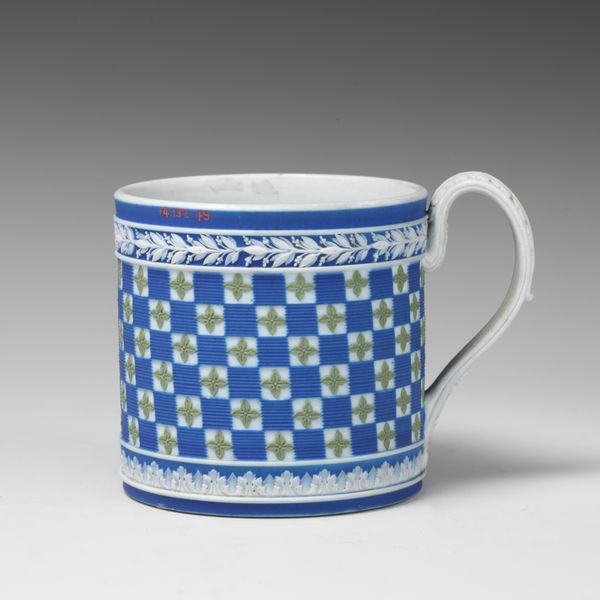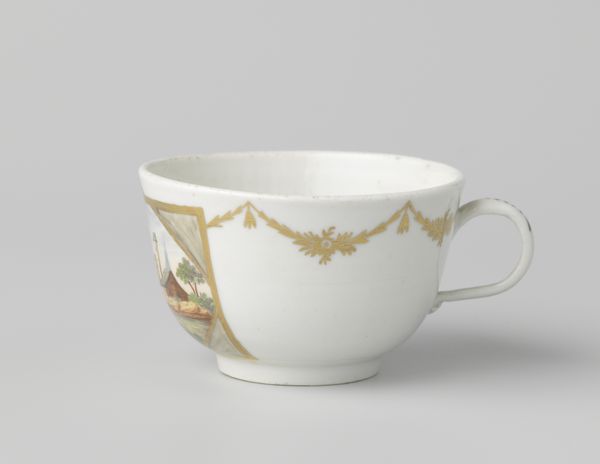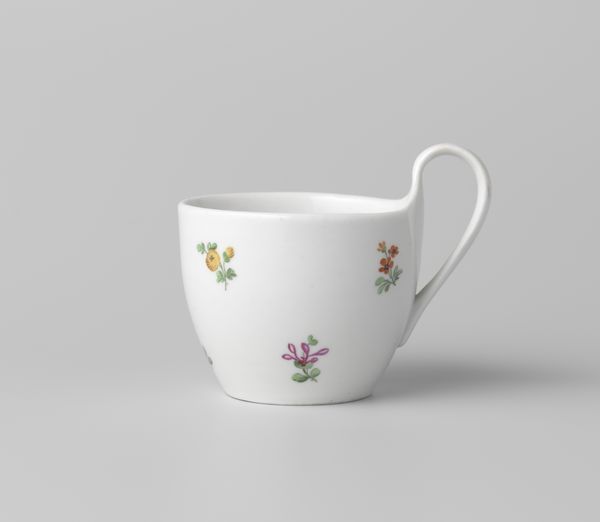
ceramic, earthenware
#
ceramic
#
earthenware
#
decorative-art
Dimensions: height 6.3 cm, diameter 6.5 cm, diameter 9.1 cm
Copyright: Rijks Museum: Open Domain
Editor: Here we have a "Cup with flower sprays and floral scrolls", dating from around 1790 to 1800, crafted at Niderviller from ceramic earthenware. It strikes me as quite delicate and precise. What draws your attention most about this piece? Curator: I immediately consider the socio-economic context of earthenware production at the turn of the 19th century. Who was producing it? Who was buying it? Niderviller was known for high-quality pieces; understanding their production methods – the labour, the materials sourced, the firing techniques – helps us appreciate its place in the market. Editor: So, less about the aesthetics and more about the hands that made it, and the hands that held it? Curator: Precisely. The floral decorations, are they hand-painted, or were transfers used? How did the increasing industrialization of ceramic production influence craft traditions like floral decorations? The gold trim would have signaled a certain level of luxury, hinting at the economic status of the consumer. Were these pieces designed for daily use or display? Editor: I hadn't thought about the industrial process at all, I was only concerned with how it looks! Are there any clues about that process, visible to the naked eye? Curator: Examine the precision and the consistency of the floral patterns. Imperfections would indicate hand-painting, uniformity suggests transfer prints, a technology rapidly advancing then. What is the clay made from? Was it mined locally? Its color affects the appearance and how successful it might be to sell! This cup reveals layers of 18th-century material culture if you investigate it in this way. Editor: It’s amazing how much we can infer about the time, just from one seemingly simple object. It definitely changes my appreciation for what went into creating, and using, this cup. Curator: Indeed, examining art through a material lens encourages us to see beyond surface appearances and engage with the complex realities of production and consumption.
Comments
No comments
Be the first to comment and join the conversation on the ultimate creative platform.

